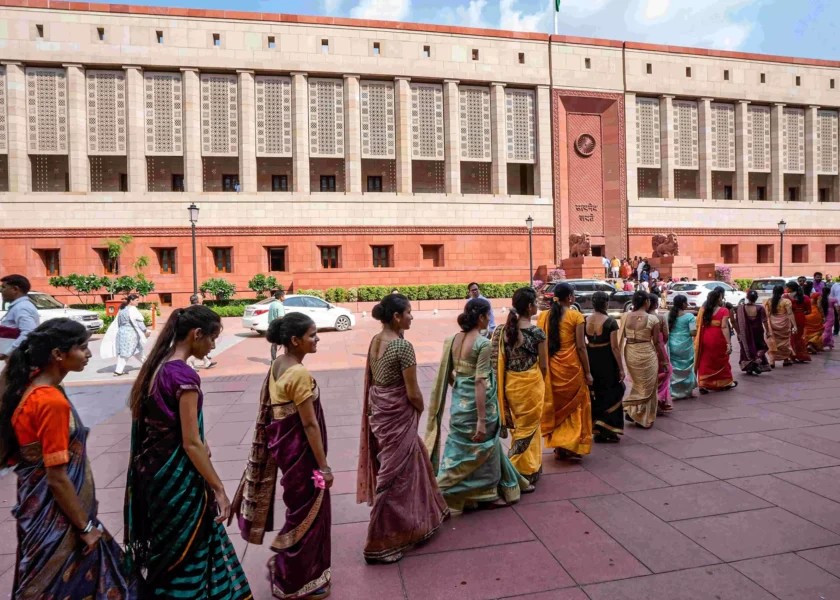The budget for 2024-25 has been presented in the parliament and is drawing mixed reactions. Of course, many of the reactions are on the basis of the political affiliations of the person concerned. This was a budget which people were looking forward to as it would indicate the development road map for the country that the new government had in mind. A large portion of the budget is a continuation of the past. Yet there is a lot in the budget which is new also. The voters in the recent elections have given voice to their concerns and the government has at least shown that the message has gone home. The budget has identified nine priorities which are productivity and resilience in agriculture, employment and skilling, inclusive human resource development and social justice, manufacturing and services, urban development, energy security infrastructure and innovation research and development. There can be no debate on these priorities as these are the areas which need reforms as well as resources and good governance if India is to continue on its growth path and aspire to become a developed nation at the earliest. Yet one cannot help but feel that these are honourable statements of intent but the road map or structure to achieve these is missing.
The biggest concern facing the country today is that of unemployment and poor quality of employment. The latter is responsible for low productivity and stagnation in real wages particularly in the rural areas. 83% of the unemployed work force consists of youth. In particular the level of unemployment is going up with the more educated a young person is becoming. The highest unemployment is amongst the graduates. This is evident by the vast number of young boys and girls applying for any government job that is advertised. The resentment shown by the youth who are on the streets protesting against an epidemic of paper leaks which have suddenly got exposed is a manifestation of the seriousness of the issue of unemployment. In recent past the Central Government has been in a denial mode about the existence of the problem and has been quoting selective data to show that the rate of unemployment is very low. The Ministers, officers and economists of Government of India have conveniently overlooked the fact that most of the increase in employment is in the agriculture sector and consists of self employed people including those who are unpaid workers. In any case, the issue of unemployment should not be buried under a whole lot of statistics and data sets. One only has to move amongst the people to feel their anxiety and frustration to understand the immensity of the problem.
Fortunately, by listing employment as one of the priorities the budget has at least recognised that a serious problem of unemployment exists. However, the solutions suggested do not inspire confidence. They seem to touch the problem at its periphery and one is not sure about their actual impact on the level of unemployment. The apprenticeship scheme is not a bad idea but it is likely to run into implementation bottlenecks. Also, their employability in the future will depend upon the kind and quality of training that industry will impart to them. The other two schemes regarding the Government paying the EPF of employees for two years at Rs. 3000 per month and payment of one month salary of employees up to Rs. 15000 are not likely to incentivise the industry to hire more employees. The industry today is becoming more and more capital intensive in order to have higher productivity and low costs. None of the incentive schemes proposed seem to have enough muscle to offset the gains that industry gets by substituting labor by capital. Skilling 20 lakh youth in 5 years appears to be much lower than what is required considering that according to the economic survey India needs to create 78 lakh jobs every year to cater to those entering the job market. The problem of unemployment is of such a huge dimension that it called for a frontal assault instead of these piecemeal and scattered incentives proposed. The minimum that could have been done was to enhance the number of days of employment and wage rate under MGNREGA and consider having a scheme on similar lines for the urban areas. The PLI scheme could have been amended to incentivise not only production but also creation of additional employment.
India cannot become a developed nation without the agriculture sector leading the way. The main demands of the farmers to give a legal guarantee for MSP and their indebtedness has not been addressed in the budget at all. A lot of well intentioned statements regarding agriculture have been made without any concrete steps to raise the agriculture productivity, increase the research and development in agriculture and develop and network the agriculture markets. It seems that having been forced to take back the three new agriculture reforms due to their not being accepted by the farmers the Central Government is now fighting shy of considering structural reforms in the agriculture sector. Off course, reforms require taking all stake holders on board. The rural economy has not been given any significant increase in allocation in the budget.
The MSME sector is vital because it contributes maximum to employment after agriculture. The budget once again prioritises MSME sector but does not offer a tangible roadmap for its development. 99% of the MSME sector is micro in nature and this is more or less in the informal domain. This micro sector which is responsible for 97% of the employment under MSME is not able to take advantage of the credit guarantee scheme that has been proposed in the budget. Having a special bank for MSME’s would have been a good idea as in reality this sector faces a lot of challenges in obtaining credit from the existing system. Further, the issues of technology, marketing and delayed payments need urgent attention if this sector is to fulfill its potential.
To fully reap the demographic dividend the education and health sector needed new initiatives and a much higher allocation than what has been provided. The quality of education from primary to higher is abysmal but the budget has not suggested any project to improve the quality in a mission mode. Universal quality health coverage is still a distant dream. The budget speech has delineated both education and health as priorities but not enough appears to have been proposed in this direction. Also, the scourge of malnutrition does not get the attention it merits.
It is indeed heartening that India is the 5th largest economy today and is growing at a fast rate. However, the low per capita income of the country must trouble the policy makers and a long term strategic response is required for this. The budget does not give any indication of this though it may be too much expect from an annual budget exercise.
To conclude, the budget has at least shown awareness of the challenges faced by India and prioritised key areas. However, neither the budget speech nor the allocations give an indication that these issues are being tackled. I only hope that future budgets would be able to come out with a more concrete roadmap to make India a developed nation.




